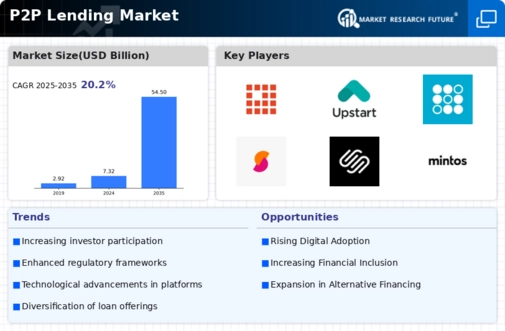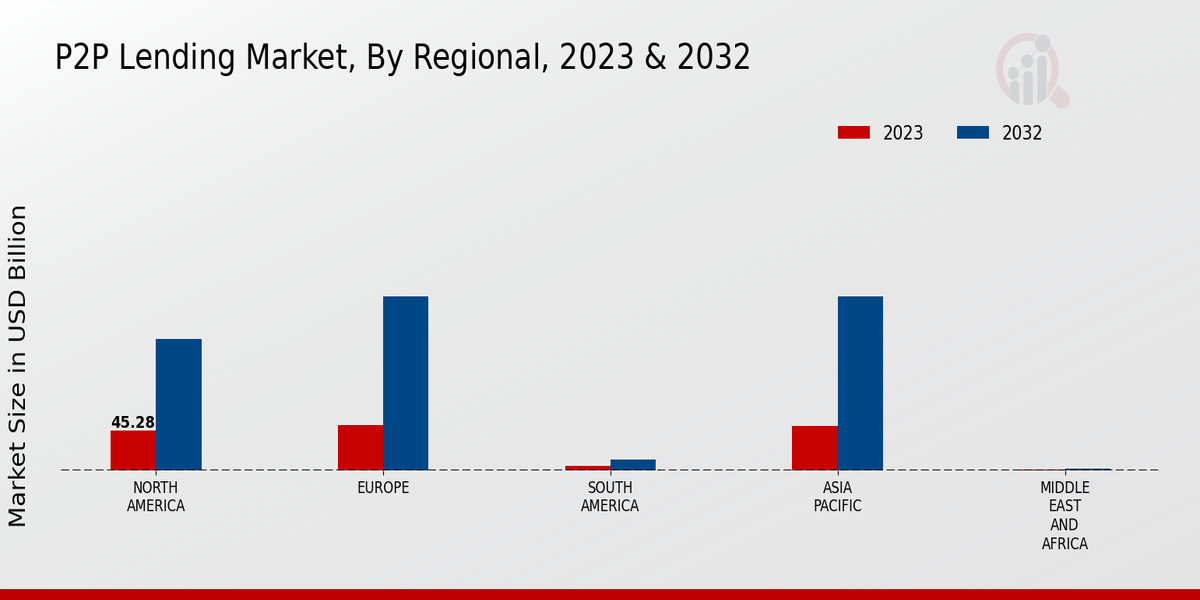Regulatory Support
Regulatory frameworks are evolving to support the Global P2P Lending Market Industry, creating a conducive environment for growth. Governments are recognizing the potential of P2P lending to enhance financial inclusion and stimulate economic activity. For example, some jurisdictions have implemented regulations that facilitate the operation of P2P platforms while ensuring consumer protection. This regulatory backing is likely to bolster investor confidence, attracting more participants to the market. As a result, the industry may experience a compound annual growth rate of 20.03% from 2025 to 2035, reflecting the positive impact of supportive regulations on market expansion.
Global Economic Trends
The Global P2P Lending Market Industry is influenced by broader economic trends that shape consumer behavior and lending practices. In times of economic uncertainty, individuals and small businesses often seek alternative financing options to navigate financial challenges. P2P lending provides a viable solution, allowing borrowers to access funds quickly and efficiently. Moreover, as global economies recover and grow, the demand for personal and business loans is expected to rise. This trend suggests that the industry will continue to thrive, with projections indicating substantial growth in the coming years, further solidifying its role in the financial ecosystem.
Market Growth Projections
Technological Advancements
The Global P2P Lending Market Industry is experiencing a transformative phase driven by rapid technological advancements. Innovations such as artificial intelligence and blockchain are enhancing the efficiency and security of lending platforms. For instance, AI algorithms are being utilized to assess creditworthiness more accurately, thereby reducing default rates. This technological evolution is expected to contribute to the market's projected growth, with the industry anticipated to reach 7.32 USD Billion in 2024. As platforms adopt these technologies, they are likely to attract a broader customer base, thereby fostering competition and improving service delivery.
Consumer Awareness and Education
Consumer awareness and education are pivotal drivers of the Global P2P Lending Market Industry. As more individuals become informed about the benefits of P2P lending, including competitive interest rates and streamlined application processes, the market is likely to expand. Educational initiatives by platforms and financial institutions are helping demystify the lending process, thereby encouraging participation from both borrowers and investors. This increased awareness is essential for fostering trust in P2P lending, which is crucial for its long-term sustainability. As the market matures, the growing understanding of its advantages will likely contribute to its overall growth trajectory.
Increasing Demand for Alternative Financing
The Global P2P Lending Market Industry is witnessing a surge in demand for alternative financing solutions. Traditional banking systems often impose stringent lending criteria, which can exclude many potential borrowers. P2P lending platforms offer a more accessible alternative, allowing individuals and small businesses to secure loans without the burdensome requirements of conventional banks. This shift is particularly evident in emerging markets, where access to credit remains limited. As a result, the industry is projected to grow significantly, potentially reaching 54.5 USD Billion by 2035, indicating a robust appetite for these alternative financial solutions.
























